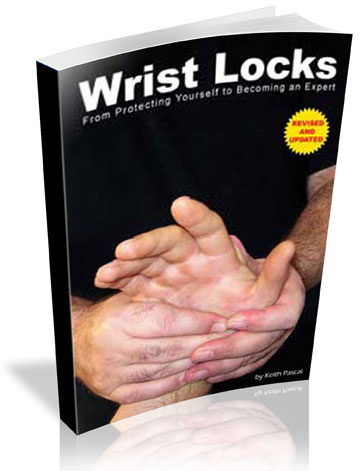
Blog
|
How about something that has a breaking element to the technique? Maybe from a joint lock?
Is there such a martial-arts move?
Actually, there are many.
Before you discover such potentially-maiming techniques, you have to ask yourself why you need such harsh moves. Any time, you get in a fight, there is the potential for legal ramification.
This is especially true when you subdue with a joint lock first, and then continue to do damage. The wrist lock or arm bar might be considered self defense, depending on the circumstance. Maybe you had to lock, in order to defend yourself. But once you have a lock effected, any further action is a new attack.
This really needs to be understood.
With the above in mind, yes, there may be an occasion where you need to defend yourself in a vioilent, lock-then-break fashion. With multiple assailants, for example. Or to protect your child or other loved one. Maybe to defend against a weapon.

Are you ready to learn a more extreme joint locking technique?
Which Submission Lock to Use in a Street FightOf course, you'll use whatever works. No such thing as a fair fight, if you are being attacked, and all of that advice.Most of the best locks to use in a fight are those that require less precision to effect. I suggest, to start, that you concentrate on the elbow. In a fight, any time your opponent has a straight arm within your reach, offers an opportunity for a lock, and ultimately, a break. Your attacker punches. You take the punch with a check or block, and feed it into an arm bar. (Of course, if you practice Bruce Lee's JKD, then you will have some sort of a strike even before you check.) Once you have an arm bar, use your other fist to smash down on your opponent's outstretched elbow. Instead of an arm bar, imagine that you are locking your attacker's arm behind his (or her) back. WIth the correct pressure of your own arm against your opponent's elbow, you can snap it wihtout striking. The force against the elbow will be enough ... to end the fight. Once you perfect straight-arm breaking, you can practice other locks -- maybe htose that bend at the wrist. To turn those into extreme street submission breaking techniques, put the lock on with a lock of force. Really torque the lock, so your opponent's body moves. Then, all of a sudden, limit the range of movement of the attacker's wrist. You'll be surprised at the damage you can cause. (In other words, don't do this with any amount of force on a practice partner. No emergency trips to the hospital, please.) As you perfect any joint lock, you'll feel exactly where the pain center is located. You'll get a verrrry strong clue as to where to apply pressure for a submission break. Train carefully.
Now, this new and revised edition has 423 new photos -- joint-lock sequences to help you control others with ease. It also boasts new locks and two new bonus chapters, featuring Steve Golden, an original Bruce Lee and Ed Parker student.
Read more about Wrist Locks Revised (available in soft cover) ....
|
 Of all of the martial arts books written by Keith Pascal, Wrist Locks: From Protecting Yourself to Becoming an Expert is the book that martial artists enjoy working through the most.
Of all of the martial arts books written by Keith Pascal, Wrist Locks: From Protecting Yourself to Becoming an Expert is the book that martial artists enjoy working through the most.